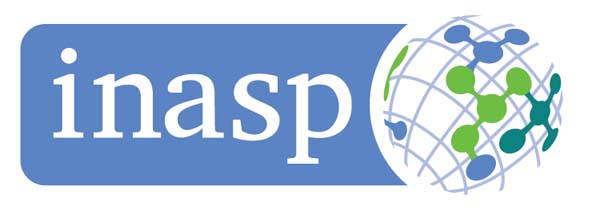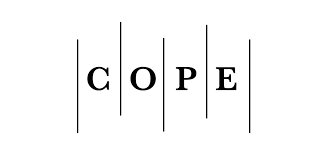Compression-based Aggregation and Clustering Techniques for XML Enhanced Performance
DOI:
https://doi.org/10.29304/jqcsm.2024.16.21546Keywords:
web services , aggregation, soap message, XML, clustering, compressionAbstract
This paper has presented a comprehensive literature study and discusses the primary problem of network congestion and bottlenecks in XML applications. The explosive growth of Web services has caused a significant problem in network traffic due to the largely repetitive XML textual structures. The challenge of XML message size reduction in web services has been examined, focusing on new approaches such as compression methods and message clustering for Aggregation and compression of XML messages efficiently. The goal is to examine how different strategies affect network traffic. This overview discusses twenty-five publications categorized into four: compression techniques, aggregation approaches, clustering for web services aggregation approaches, and other web services clustering models. In comparison to all models, evaluation has shown that web service clustering solutions efficiently reduce traffic. Technically, the web service clustering for aggregation models has achieved an excellent average compression ratio of up to (14.12).
Downloads
References
D. Al-Shammary and I. Khalil, “Redundancy-aware SOAP messages compression and aggregation for enhanced performance,” J. Netw. Comput. Appl., vol. 35, no. 1, pp. 365–381, 2012.
A. Barkat, O. Kazar, and I. Seddiki, “Framework for web service composition based on QoS in the multi cloud environment,” Int. J. Inf. Technol., vol. 13, no. 2, pp. 459–467, 2021.
S. Sagayaraj and M. Santhoshkumar, “Heterogeneous ensemble learning method for personalized semantic web service recommendation,” Int. J. Inf. Technol., vol. 12, no. 3, pp. 983–994, 2020.
H. K. Sowmya and R. J. Anandhi, “An efficient and scalable dynamic session identification framework for web usage mining,” Int. J. Inf. Technol., vol. 14, no. 3, pp. 1515–1523, 2022.
D. Al-Shammary and I. Khalil, “Compression-based aggregation model for medical web services,” in 2010 Annual International Conference of the IEEE Engineering in Medicine and Biology, IEEE, 2010, pp. 6174–6177. doi: 10.1109/IEMBS.2010.5627759.
N. Haroune-Belkacem, F. Semchedine, A. Al-Shammari, and D. Aissani, “SMCA: An efficient SOAP messages compression and aggregation technique for improving web services performance,” J. Parallel Distrib. Comput., vol. 133, pp. 149–158, 2019.
N. Agarwal, G. Sikka, and L. K. Awasthi, “Evaluation of web service clustering using Dirichlet Multinomial Mixture model based approach for Dimensionality Reduction in service representation,” Inf. Process. Manag., vol. 57, no. 4, p. 102238, 2020.
N. A. Al-Musawi and D. Al-Shammary, “Static Hilbert convex set clustering for web services aggregation,” Indones. J. Electr. Eng. Comput. Sci., vol. 32, no. 1, pp. 372–380, 2023.
Y. Liu and Z. Hong, “Mapping XML to RDF: An algorithm based on element classification and aggregation,” in Journal of Physics: Conference Series, IOP Publishing, 2021, p. 12012.
N. A. Al-Musawi and D. Al-Shammary, “Dynamic Hilbert clustering based on convex set for web services aggregation,” Int. J. Electr. Comput. Eng., vol. 13, no. 6, pp. 6654–6662, 2023.
C. Ben Njima, C. G. Guegan, Y. Gamha, and L. Ben Romdhane, “Web Service Composition in Mobile Environment: A survey of Techniques,” IEEE Trans. Serv. Comput., 2024.
D. Al-Shammary, “Jaccard Coefficients based Clustering of XML Web Messages for Network Traffic Aggregation,” J. Al-Qadisiyah Comput. Sci. Math., vol. 11, no. 2, pp. 82–91, 2019.
A. M. Abbas, A. A. Bakar, and M. Z. Ahmad, “Fast dynamic clustering SOAP messages based compression and aggregation model for enhanced performance of Web services,” J. Netw. Comput. Appl., vol. 41, pp. 80–88, 2014.
G. P. Tiwary, E. Stroulia, and A. Srivastava, “Compression of xml and json api responses,” IEEE Access, vol. 9, pp. 57426–57439, 2021.
M. Ericsson, “The effects of xml compression on soap performance,” World Wide Web, vol. 10, pp. 279–307, 2007.
C. Werner and C. Buschmann, “Compressing SOAP messages by using differential encoding,” in Proceedings. IEEE International Conference on Web Services, 2004., IEEE, 2004, pp. 540–547.
J. C. Estrella, M. J. Santana, R. H. C. Santana, and F. J. Monaco, “Real-time compression of soap messages in a soa environment,” in Proceedings of the 26th annual ACM international conference on Design of communication, 2008, pp. 163–168.
H. Xu, J. I. Kim, and J. Chen, “An iterative reference mapping approach for BIM IFCXML classified content compression,” Adv. Eng. Informatics, vol. 54, no. January, p. 101788, 2022, doi: 10.1016/j.aei.2022.101788.
A. Kiourtis, A. Mavrogiorgou, and D. Kyriazis, “Health information exchange through a Device-to-Device protocol supporting lossless encoding and decoding,” J. Biomed. Inform., vol. 134, no. September, p. 104199, 2022, doi: 10.1016/j.jbi.2022.104199.
D. Hucke, M. Lohrey, and L. S. Benkner, “Entropy Bounds for Grammar-Based Tree Compressors,” IEEE Trans. Inf. Theory, vol. 67, no. 11, pp. 7596–7615, 2021, doi: 10.1109/TIT.2021.3112676.
D. Al-Shammary and I. Khalil, “SOAP web services compression using variable and fixed length coding,” in 2010 Ninth IEEE International Symposium on Network Computing and Applications, IEEE, 2010, pp. 84–91.
C. B. Siew and P. Kumar, “CitySAC: a query-able cityGML compression system,” Smart Cities, vol. 2, no. 1, pp. 106–117, 2019.
H. Devarajan, A. Kougkas, and X.-H. Sun, “An intelligent, adaptive, and flexible data compression framework,” in 2019 19th IEEE/ACM International Symposium on Cluster, Cloud and Grid Computing (CCGRID), IEEE, 2019, pp. 82–91.
K. A. Phan, Z. Tari, and P. Bertok, “Optimizing Web services performance by using similarity-based multicast protocol,” Proc. ECOWS 2006 Fourth Eur. Conf. Web Serv., pp. 119–126, 2006, doi: 10.1109/ECOWS.2006.29.
K. M. Senagi, G. Okeyo, W. Cheruiyot, and M. Kimwele, “An aggregated technique for optimization of SOAP performance in communication in Web services,” Serv. Oriented Comput. Appl., vol. 10, no. 3, pp. 273–278, 2016, doi: 10.1007/s11761-015-0186-x.
A. Habi, B. Effantin, and H. Kheddouci, “Search and aggregation in XML documents,” Lect. Notes Comput. Sci. (including Subser. Lect. Notes Artif. Intell. Lect. Notes Bioinformatics), vol. 10438 LNCS, pp. 290–304, 2017, doi: 10.1007/978-3-319-64468-4_22.
D. Al-Shammary, I. Khalil, Z. Tari, and A. Y. Zomaya, “Fractal self-similarity measurements based clustering technique for SOAP Web messages,” J. Parallel Distrib. Comput., vol. 73, no. 5, pp. 664–676, 2013.
D. Al-Shammary, I. Khalil, and Z. Tari, “A distributed aggregation and fast fractal clustering approach for SOAP traffic,” J. Netw. Comput. Appl., vol. 41, pp. 1–14, 2014.
D. Al-Shammary, I. Khalil, and L. E. George, “Clustering SOAP Web services on internet computing using fast fractals,” in 2011 IEEE 10th International Symposium on Network Computing and Applications, IEEE, 2011, pp. 366–371.
M. Piernik, D. Brzezinski, and T. Morzy, “Clustering XML documents by patterns,” Knowl. Inf. Syst., vol. 46, no. 1, pp. 185–212, 2016, doi: 10.1007/s10115-015-0820-0.
G. Costa and R. Ortale, “Machine learning techniques for XML (co-)clustering by structure-constrained phrases,” Inf. Retr. J., vol. 21, no. 1, pp. 24–55, 2018, doi: 10.1007/s10791-017-9314-x.
S. Sahunthala, A. Geetha, and L. Parthiban, “An Improved Fuzzy Clustering Method for Analyzing Clustering Quality in XML Web Data,” 4th Int. Conf. Inven. Res. Comput. Appl. ICIRCA 2022 - Proc., no. Icirca, pp. 1329–1335, 2022, doi: 10.1109/ICIRCA54612.2022.9985517.
D. Zhao, H. Fu, H. Ren, M. Wei, and J. Chu, “on Cluster Core And LSPX,” pp. 1027–1032, 2017.
G. Costa and R. Ortale, “Mining cluster patterns in XML corpora via latent topic models of content and structure,” in Advances in Knowledge Discovery and Data Mining: 23rd Pacific-Asia Conference, PAKDD 2019, Macau, China, April 14-17, 2019, Proceedings, Part III 23, Springer, 2019, pp. 237–248.
G. Yongming, C. Dehua, and L. Jiajin, “Clustering XML documents by combining content and structure,” in 2008 International Symposium on Information Science and Engineering, IEEE, 2008, pp. 583–587.
Downloads
Published
How to Cite
Issue
Section
License
Copyright (c) 2024 Suad kamil Ayfan, Ahmed M. Mahdi

This work is licensed under a Creative Commons Attribution-NonCommercial-NoDerivatives 4.0 International License.













